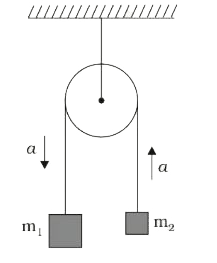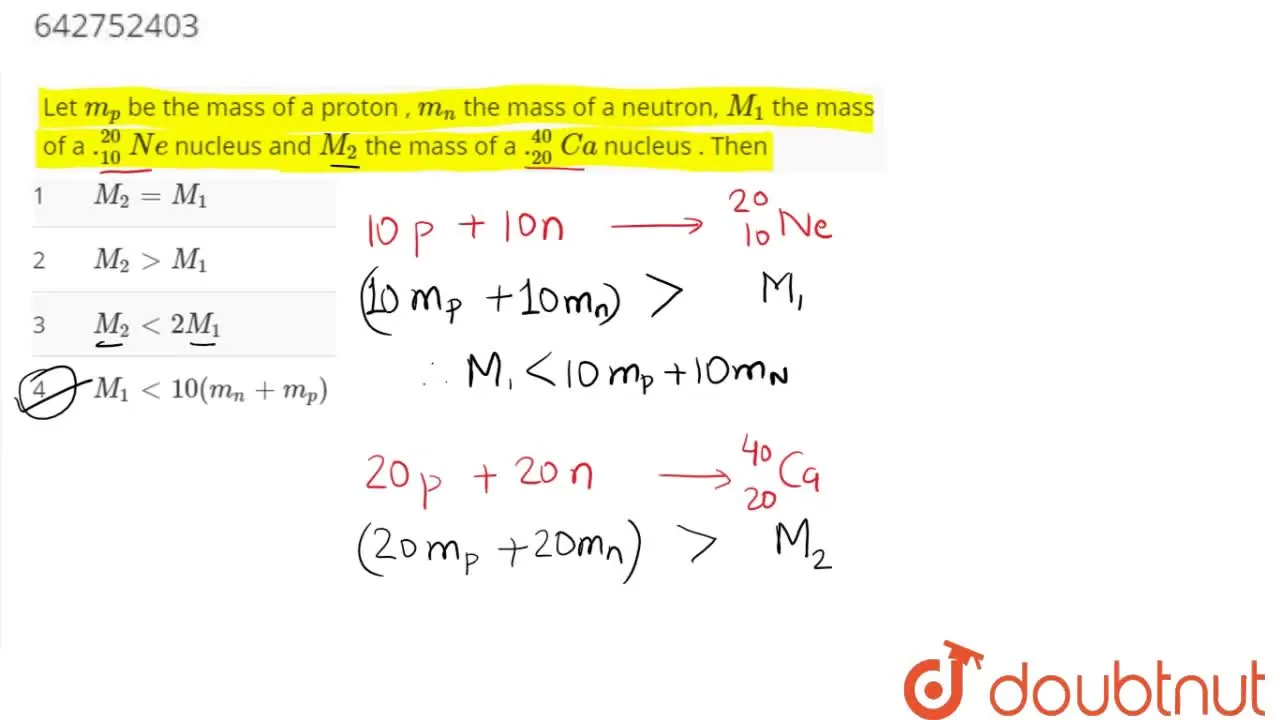Let be the mass of a proton , the mass of a neutron, the mass of a nucleus and the mass of a nucleus . Then
The correct Answer is:D
Due to mass defect (which is finally responsible for the binding energy of the nucleus). Mass of a nucleus is always less than the sum of masses of its constituent particles.
is made up of 10 protons plus 10 neutrons. Therefore mass of nucleaus
Also, heavier the nucleus, more is the mass defect
Thus,
or
or
Since
Related Playlists
Similar Questions
If mp is the mass of proton. mn that of a neutron, M1 that of _(10)Ne20 nucleus and M2 that of _(20)Ca40 nucleus, then which of the following relations is//are not true?
View SolutionMp denotes the mass of a proton and Mn that of a neutron. A given nucleus, of binding energy B, contains Z protons and N neutrons. The mass M(N,Z) of the nucleus is given by.
View SolutionMp denotes the mass of a proton and Mn that of a neutron. A given nucleus, of binding energy B, contains Z protons and N neutrons. The mass M(N,Z) of the nucleus is given by.
View SolutionThe mass of a proton is 1836 times more than the mass of an electron. It a sub-atomic of mass (m)207 times the mass of electron is captured by the nucleus, then the first ionization potential of H:
View SolutionIf in a nuclear fusion process the masses of the fusing nuclei be m1 and m2 and the mass of the resuktant nucleus be m3, then
View SolutionIf in a nuclear fusion process the masses of the fusing nuclei be m1 and m2 and the mass of the resultant nucleus be m3, then
View SolutionCalculate the binding energy of an α-particle in MeV Given : mp (mass of proton) = 1.007825 amu, mn (mass of neutron) = 1.008665 amu Mass of the nucleus =4.002800 amu, 1 amu = 931 MeV.
View SolutionTwo bodies of masses m1andm2(<m1) are connected to the ends of a massless cord and allowed to move as shown in figure. The pulley is both massless and frictionless. The acceleration of the centre of mass is (m1−m2)n(m1+m2)2g. Find the value of n.
 View Solution
View SolutionThe mass of proton is 1.0073u and that of neutron is 1.0087u (u= atomic mass unit). The binding energy of .2He4 is (mass of helium nucleus =4.0015u)
View SolutionAll nuclei consist of two types of particles- protaon and neutrons. Nuclear force is the strongest froce. Stability of nucleus is determined by the neutron - proton ratio or mass defect or binding energy per nucleus or packing fraction. Shape of nucleus is calculated by quadrupole moment. Spin of nucleus depends on even or odd mass number. Volume of nucleus depends on the mass number. Whole mass of the atom (nearly 99%) is centered at the nucleus. Magnetic moment of the nucleus is measured in terms of the nuclear magnetons.
The correct statements about nuclear force is/areView Solution


